What to include in a Healthcare Risk Register?
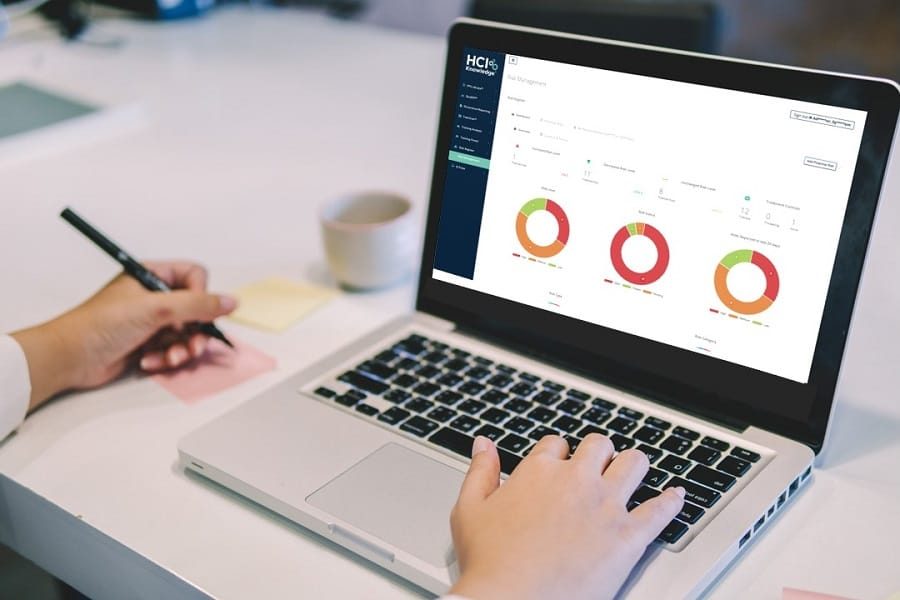
Introduction
Healthcare by nature, is an industry that faces many different types of risks, such as service and care provision risks, health and safety risks, corporate risks, and individual / service user risks. Consequently, risk management plays a pivotal role in ensuring patient safety, regulatory compliance, and the overall quality of care. The Risk Management Framework utilised by a healthcare service, must be a continuous process which is both proactive and responsive in its applications, and incorporates the identification, assessment, management, and ongoing review of risks on an organisational and individual level.
A healthcare risk register is a valuable tool that helps healthcare organisations identify, assess, and proactively manage potential risks. In this blog post, we explore the key elements to include in a healthcare risk register, and the benefit of utilising an electronic risk register.
What is a Healthcare Risk Register
A risk register is a database of assessed risks that face an organisation at any one time. The risk register should always be changing to reflect the dynamic nature of risks and the organisation’s management of them, its purpose is to help managers prioritise available resources to minimise risk and target improvements to best effect (HSE, 2017).
What to include in a Healthcare Risk Register
The Risk Register details the measures and actions in place to control each of the risks identified by the organisation (HIQA, 2014). For each risk, consider including:
- Risk classification: Include a name / identification number for the risk, the type of risk (such as organisation wide or departmental risk), the category of the risk (such as clinical risk, health and safety risk, corporate risk, care provision risk, etc.), the department it relates to and the risk source (such as incident, complaint, staff concern, audit etc).
- Description of the risk: Provide a brief overview of the risk impacting the organisation or individual.
- The person responsible for the risk: Assign a person responsible for ensuring the risk is managed appropriately.
- The likelihood, impact and rating for the risk: Conduct a risk assessment to identify the likelihood of the risk occurring and the impact if it did occur. This can involve collecting information through observation, communication, and investigation. A calculation of the likelihood x impact of the risk will give you a risk rating. Risks in the risk register are often ranked by risk rating to highlight the highest priority risks for those with accountability for the service. See the HSE Risk Assessment Tool for more information on risk ratings.
- A summary of the controls: Provide a summary of the arrangements in place to reduce the likelihood and/or impact of the risk. Controls may be preventive, responsive, or supportive to promote the potential benefits of taking appropriate risks and to reduce the potential negative consequences of risk.
- A summary of the planned actions to further reduce the risk: If a risk is regarded as moderate to high, then the risk must be treated by implementing additional controls. These controls should be detailed in the risk register.
- Risk Status: Include a status for the risk such as open, closed or pending.
- Risk Log: Provide a log for each risk to track the actions taken to treat the risk.
Risks on the risk register must be subject to ongoing monitoring by the relevant Management Team to ensure that actions identified as required are completed. (HSE, 2023)
Benefits of an Electronic Risk Register
HIQA (2014) recommend that Risk Management practices should be integrated into existing work practices and oversight mechanisms. All staff should be encouraged to manage risks systematically and this should lead to the development of a risk management culture in the service rather than a standalone risk management function.
To support the risk management function and make it easier for staff and management to engage with the risk register, having an electronic risk register is very beneficial.
An electronic risk register, such as HCI’s Risk Register Portal, allows you to have an easily accessible, online database to record and effectively manage identified risks.
When you log into the Risk Register you can see a high-level overview of the current risks in the register and easily identify where changes have occurred.
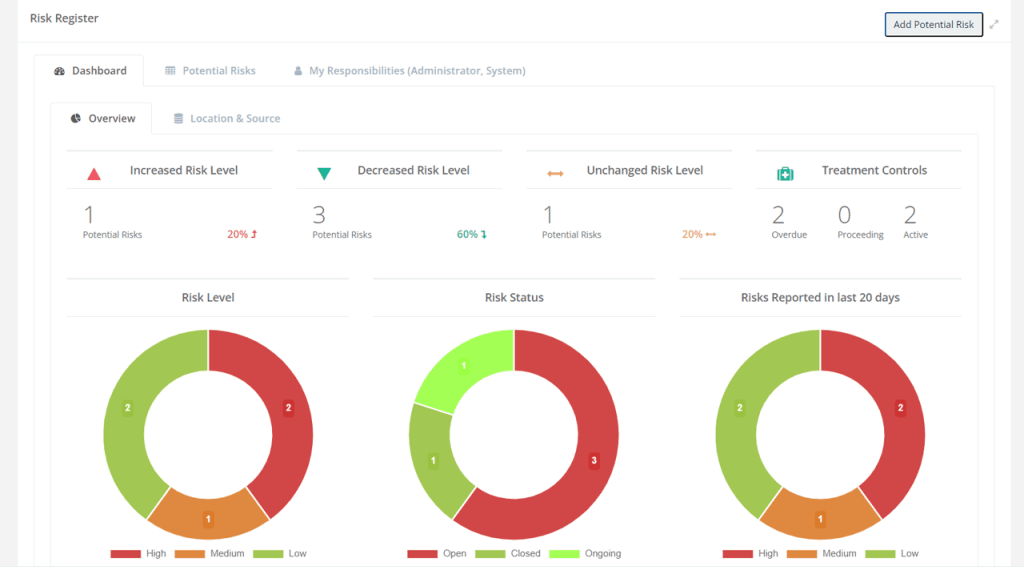
HCI’s Risk Register Portal allows you to record and view risks for department level or organisational wide. The log below highlights the details collected within the register, including the type of risk, the risk category, the source, the current status, the risk level, escalation status, and the date.
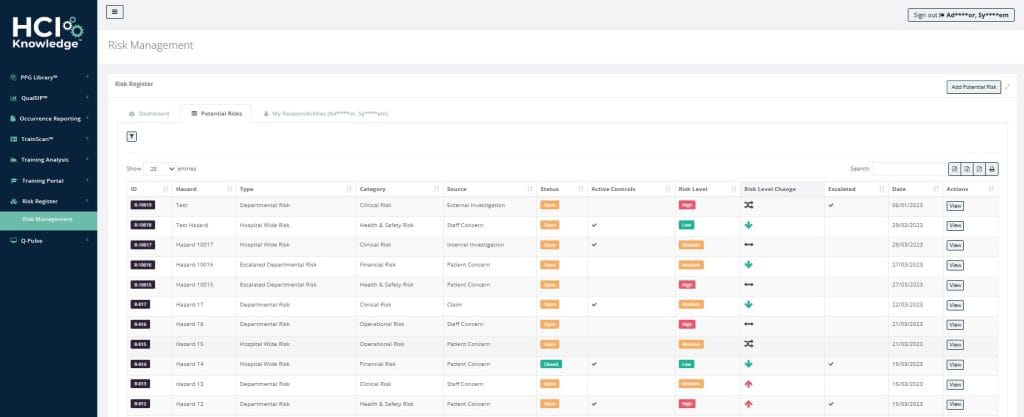
When you click in to view the risk you can see a variety of additional information such as the description of the risk, the risk assessment, responsibility, the relevant controls and the activity log. The activity log is beneficial as it allows you to see how the risk has been managed throughout its life cycle.
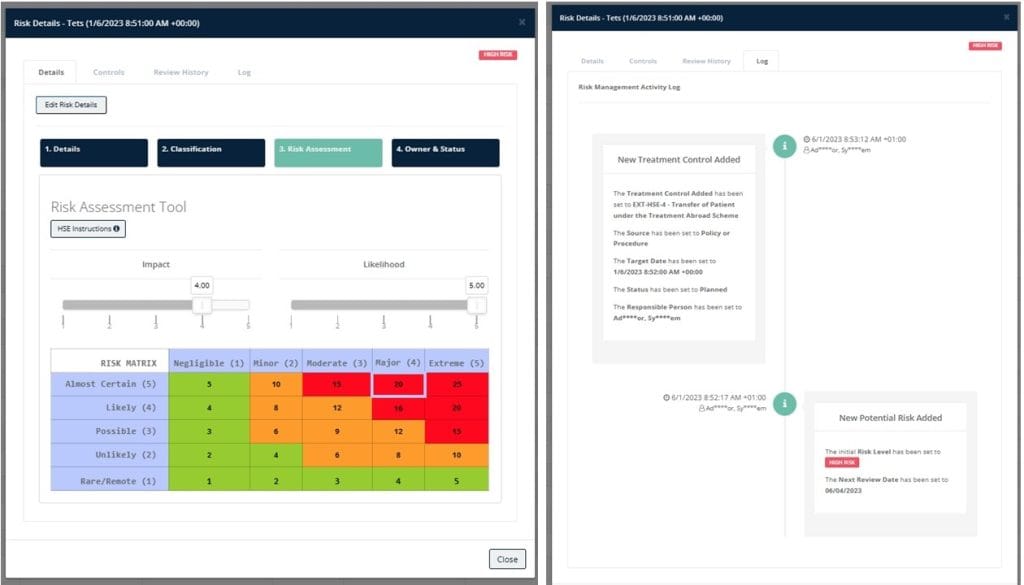
The Risk Register Portal also provides staff with a simple search functionality, they can easily log new risks as they arise, and they can view their risk responsibilities.
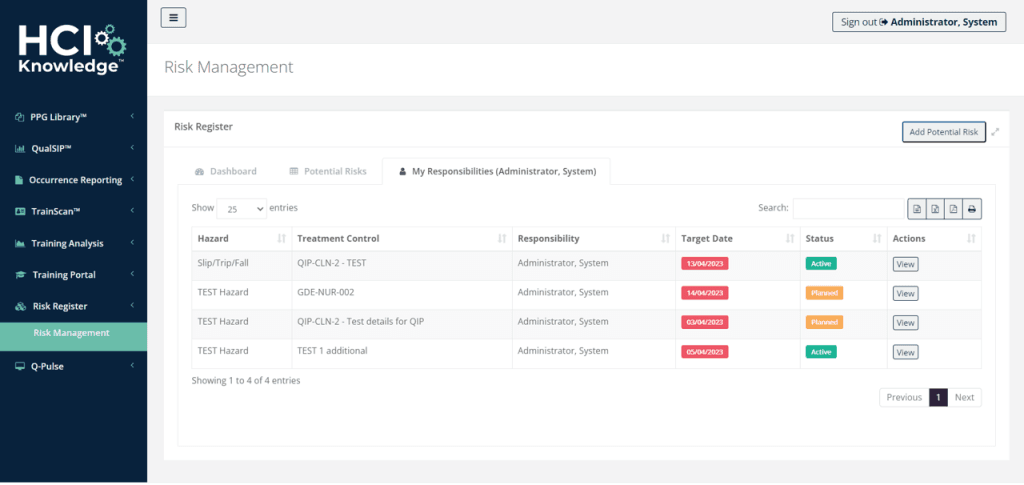
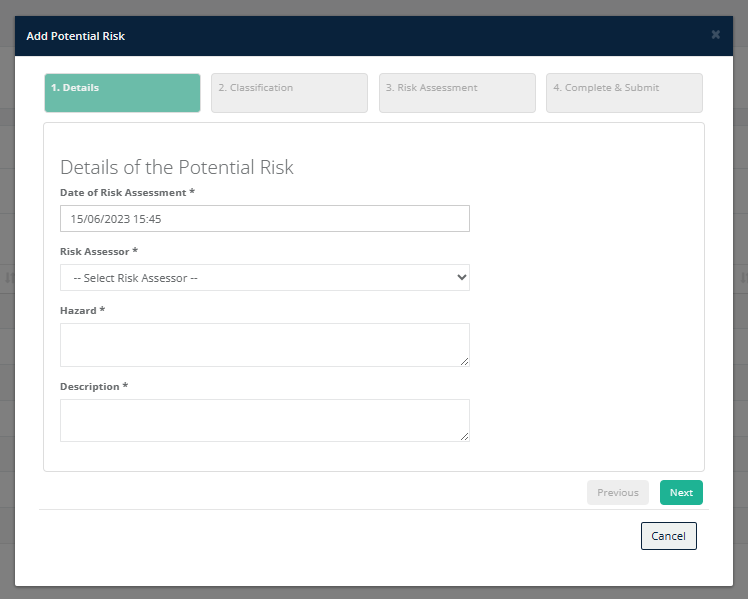
Conclusion
A Risk Register is an excellent tool used to manage the risks throughout a service. Having an electronic Risk Register allows you to identify, assess, manage and monitor all significant risks coherently.
For almost two decades, HCI have supported health and social care providers to implement Quality Management Information Systems which help to digitally transform their quality and safety processes. With our electronic Risk Register you can transform your risk management function, get ahead of potential issues and proactively work to identify controls that can minimise risks and support the delivery of safe care.
If you would like further information on the Risk Register Portal or assistance with Risk Management contact HCI at +353 (0)1 629 2559 or email info@hci.care.
References
Health Information and Quality Authority (HIQA, 2014). Guidance on Risk Management.
Health Service Executive (HSE, 2017). HSE Integrated Risk Management Policy. Quality and Patient Safety Directorate, Health Service Executive: Dublin.